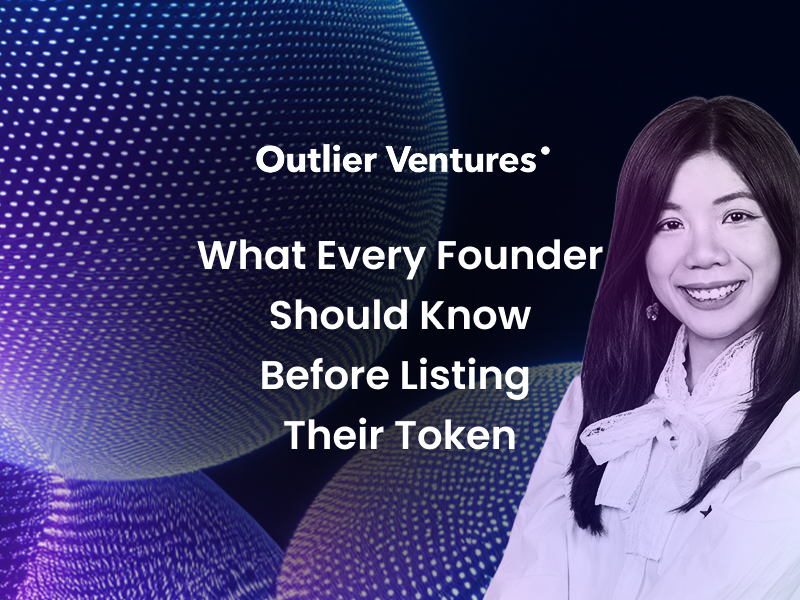Communities play a crucial role in the development of a blockchain project. They can offer extremely valuable insight into your product and market trends in general. Community members provide organic social media presence, and spread word-of-mouth awareness across the internet. Some even turn into passionate advocates for your startup. When asked, 92% of marketing professionals say that online communities have had an impact on their business, and 66% of community members themselves cite that communities have boosted their brand loyalty. Cultivating a community around your blockchain project is essential. However, you can’t do this in a day. It comes as a result of various consistent efforts in different aspects of your start-up journey. On the surface, it involves strategising your communications, marketing, and business development. But you need to think more deeply: the long-term health of your community also has a lot to do with how you incentivize participation: token structure, governance, and community alignment.
Here are a few tips to help you get started with planning how to grow your community.
1. Daydream: what’s your community vision?
This part is very important, and often overlooked.
Understandably, the early stages of a startup’s life can be overwhelming for founders: sprinting in all directions to raise funds, putting legal structures in order, scrapping together an MVP, and so on.
However, if you lack a long-term vision for your community, it’s going to be difficult to maintain engagement without constantly delivering new announcements. And in a world of constantly shrinking attention spans, people lose interest, especially between significant events.
But your community vision needs to be anchored by a shared goal. For instance, if your primary community consists of developers and tech builders, then your community should be conducive to collaboration. A good community vision statement in this case could be:
“This is a community where great minds find each other and build something meaningful together.”
This statement is a good starting point for generating ideas for activities, discussions, campaigns that work towards materializing this vision.
2. Who are our ideal community members?
To help with this exercise, have a look at other communities and social media platforms. Have you come across any good social groups online? What do they talk about?
Based on this, what kinds of people would you need to build a similar community to the good ones you’ve seen? Where do their interests intersect with your project’s goals? And where do you find them?
Valuable community members contribute to meaningful discussions about the evolution of your project and relevant industries or issues. They serve as a reliable source of feedback, both good and bad—especially the bad. They flag issues early on to help you resolve them quickly before they turn into even bigger problems.
Such insights are valuable, and actually have measurable value. Companies pay for this information, and there are even agencies whose entire businesses revolve primarily around such insights.
You also need thought leaders in your community. These are visionaries whose principles and goals align with your values, and are likely to build great things themselves in the future. They might even take a more active role within your project later on. Having such people in your community is valuable as they tend to lead and steer discussions. If you find such people online, you could list them as sample personas for your ideal community members, which can help shape the way you target audiences in community growth efforts.
3. What is good behavior, and how do you encourage it?
Incentives are a big thing in web 3.0; with different stakeholders comes different motivations. It’s important that you understand who these stakeholders are, what their priorities are, and how you can support and reward them for their contributions to your ecosystem.
Referrals are one of the most common incentive schemes utilized in the space. But incentive schemes can be taken much, much further in web 3.0. Incentives don’t always have to be financial. Active, positive participation in community discussions can be incentivized through reputation boosts, badges, prestige, special or early access. Incentives for positive behavior can also be tied to your token system. They don’t always have to cost you a lot, and this means you can have more sustainable incentive systems that work long-term.
4. Do you really need all those channels?
The channel you use provides a framework for how your community will run—what can and can’t be done in that channel. For example, Telegram is usually for casual conversations between community members, and is also great for announcements, AMAs, and some campaigns. But if you want to foster collaboration, its lack of sub-channels can be limiting. For topic-specific discussions, there are options, like Discord.
Currently, most web 3.0 communities use Discord, Telegram, Twitter, and traditional social media. But these are very web 2.0.
In the future, real web 3.0 communities will be far more immersive; they will make use of actual metaverses and advanced technologies. According to Pew Research, 54% of experts said that by 2040 the metaverse will be a fully-immersive community, and completely integrated into the daily lives of more than a half billion people globally.
Nonetheless, it’s unclear how long it will take for this migration. While Discord currently boasts 150 million monthly users, the big two metaverse platforms are estimated to pale at roughly 2,000 Monthly users. Nonetheless, big brands are ramping up their brand marketing and presence in the metaverse through events, virtual concerts, and activations.
This isn’t to say that you shouldn’t use these traditional platforms for starting up your communities. You still need a familiar platform from which you will gather web 2.0 audiences and usher them into the new, better, more immersive web 3.0 communities. For most cases, Twitter should is your place to go.
Currently, projects launching tokens utilize platforms like Discord to help with whitelisting, campaigns, and distribution. This is completely understandable at the beginning as they still serve your purpose. But as web 3.0 community platforms come into fruition, your community should evolve to use these as well.
This is especially true for projects that are actually community platforms themselves—why bring users into Discord when you can bring them straight into your platform?
Remind yourself of your project objectives—if you are building a metaverse space, then in all likelihood, your mission is to provide an upgraded social world; a better alternative to traditional web 2.0 community spaces; you ultimately want to drive them obsolete. So why build up Discord or Telegram’s user base when you could be driving your own? The only thing keeping you from doing this is if your platform isn’t live yet.
If, on the other hand, your product is not a metaverse platform, this can be an opportunity for a potential partnership. Are there existing web 3.0 platforms that could work? Can you strike up a conversation with these platforms and build a meaningful relationship?
Of course, if traditional community channels are easier for you to use at the moment, by all means, go ahead. Don’t alienate both you and your target audience by using a wholly unfamiliar platform, especially if web 3.0 alternatives are not fully formed with features that you need.
And no, you do not need to open up all sorts of channels just because everybody else does. Choose only what you need and do not dilute your resources (and community activity) across too many platforms.
5. How do you keep things up?
Ironically, the time you are deeply focused on building up your tech and internal processes is also the time when you are likely to neglect public communications, leading your audience to think nothing is happening; of course, the truth is the absolute opposite.
An active community can help give you insights into what conversations need to be had and which initiatives need to be taken on. This can be extremely useful, as it is estimated that 90% of communities will share insights and suggestions on improving products and services. In an ideal world, your community would be thriving without too much intervention from your team. But until you get your community to that point, you need a plan for when there are no big announcements to make.
Community managers can strategize and initiate engagement during these times, making sure that people know what to expect and what to look forward to. They are a bridge that makes sure you are in touch with community sentiment and how the wider public perceives your team. Done right, you can build attention around your brand without bombarding customers with information. A recent survey by Forbes found that 64 percent of marketers believe that word of mouth is the most effective form of marketing. Ultimately, they make sure that the public is updated on what the team is doing, leaving you free to do what you do best: building your product.
A Community-led economy
In a space where the rules of value are still being written and rewritten, blockchain is equalizing the playing field and empowering groups of people. Communities with aligned incentives are the heart of web 3.0. At Outlier Ventures we’re no stranger to the strength of community. That’s why we’ve been building our network of over 100+ portfolio companies which can help you build yours. Come join our community and be an Outlier!
Cecille De Jesus is a Marketing Advisory Manager at Outlier Ventures. She has previously worked in science and tech communications as an author for Futurism and with several blockchain projects including Tezos and æternity blockchain, where she headed communications and PR targeted at different communities and stakeholders.




